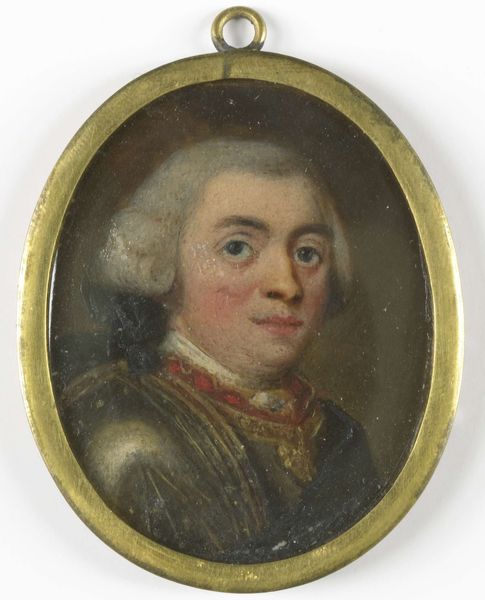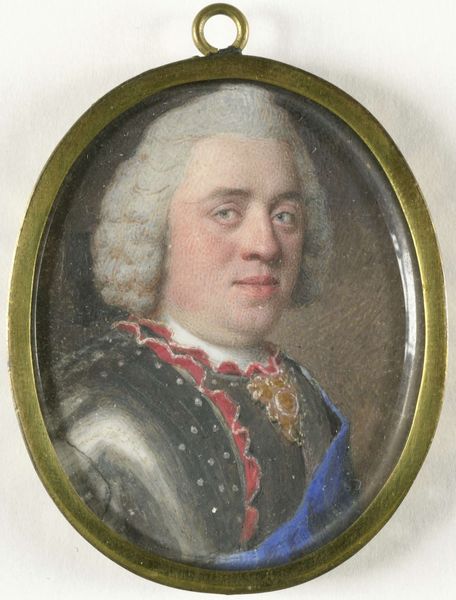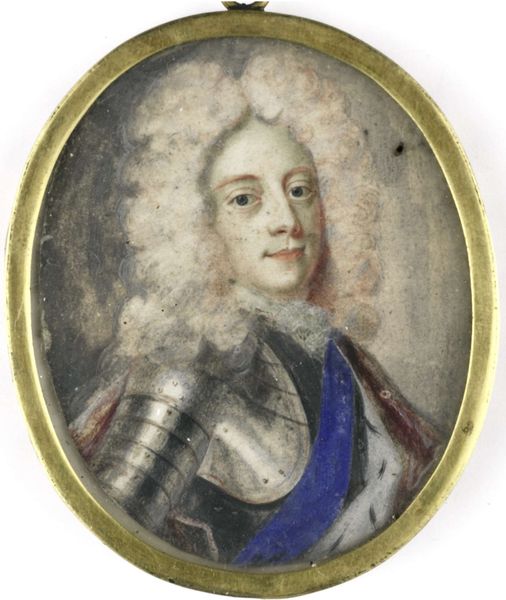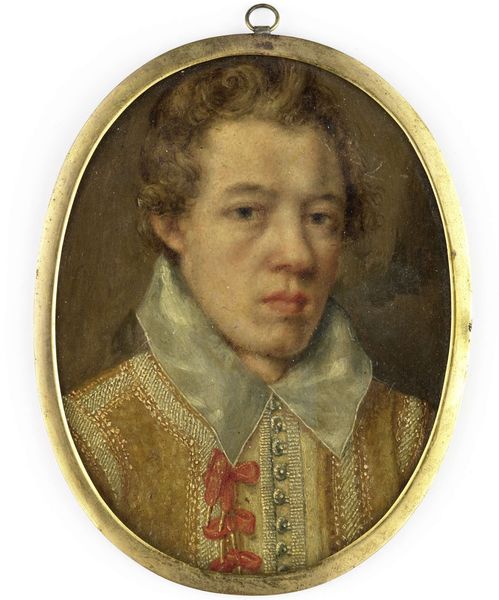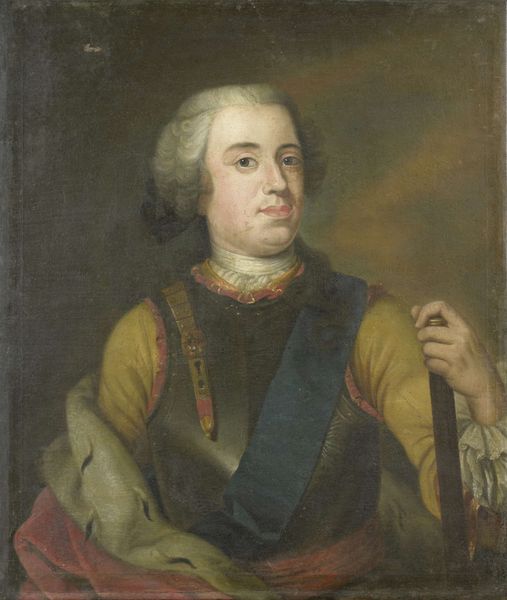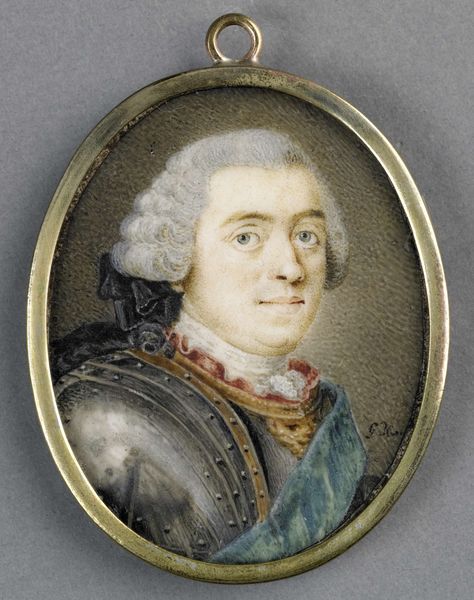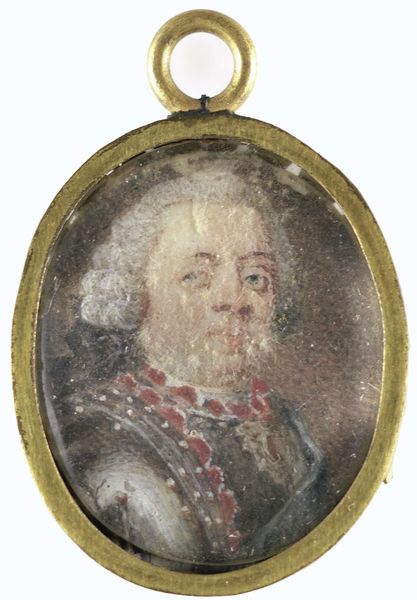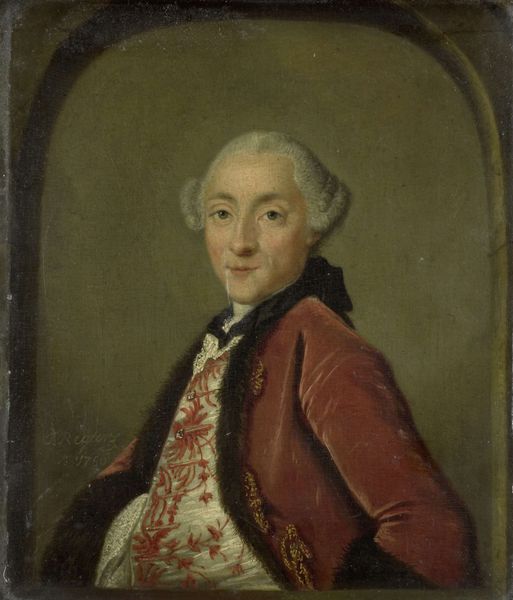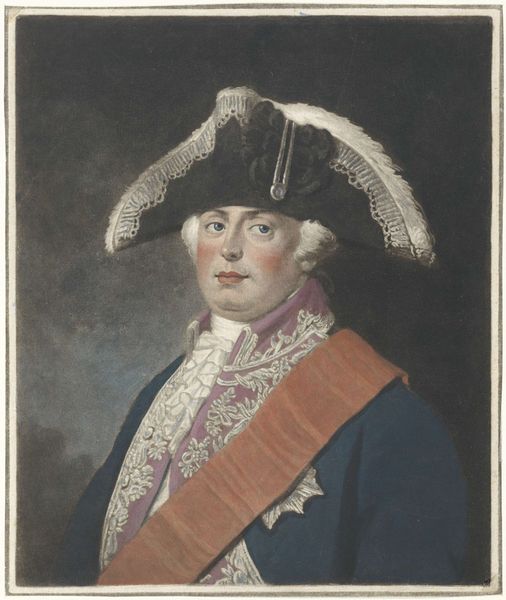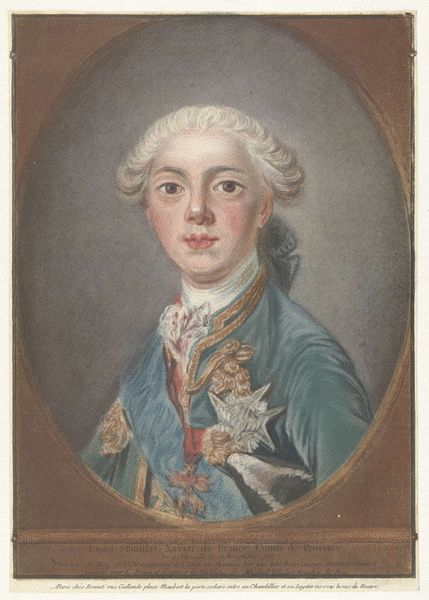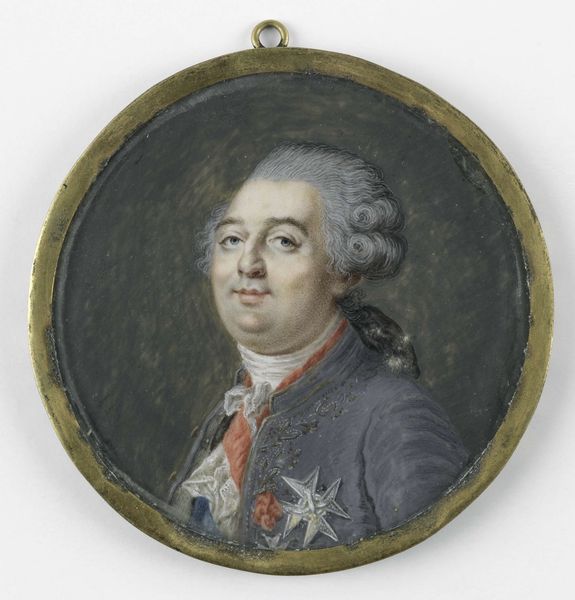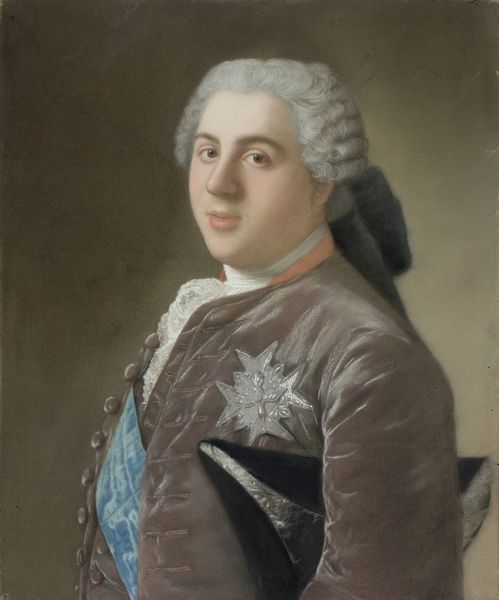
painting
#
portrait
#
baroque
#
painting
#
oil painting
#
portrait head and shoulder
#
miniature
Dimensions: height 7.7 cm, width 5.9 cm, height 10.3 cm, width 7.6 cm, depth 0.7 cm
Copyright: Rijks Museum: Open Domain
Curator: Here we have a miniature oil painting, possibly from 1748, depicting Willem IV, Prince of Orange-Nassau. Editor: My initial reaction is one of constrained power. The tight oval composition feels restrictive, almost as if he's a specimen pinned for study. There's a formality that’s bordering on oppressive, wouldn’t you agree? Curator: Well, miniature portraits of this era served a very specific social function. They were often commissioned as personal tokens of allegiance, love, or diplomatic connection, circulated amongst the elite as symbols of power and prestige. The Baroque style lends itself to the representation of status through very particular conventions. Editor: Yes, I notice that immediately in the use of colour. The bold primary of the sash pops. Although, I am struck by the tension between that vibrant blue, contrasted against the almost muted, somber feel given off by the sepia wash used throughout, which dominates. How might that tension contribute to the symbolism? Curator: That tension speaks volumes. The controlled palette, almost sepia as you pointed out, hints at the complexities inherent in the role of leadership. Even the slight imperfections contribute; they reflect not just individual features but the burden of governance in his era. His expression alone appears distant. Editor: I find that thought especially fascinating in this specific context. I find myself considering Willem IV's brief and turbulent reign. How interesting that such intimate objects played such a public role. They solidified relationships but also reinforced hierarchy through the dissemination of the Prince's likeness, effectively asserting dominance within select circles. Curator: Absolutely. The artist utilizes line, colour, and form to subtly convey that authority, that separation. The formality becomes a shield, an intentional artistic barrier. Editor: Which now shapes our viewing experience, centuries later. It encourages contemplation about not just a man, but a position. It highlights art’s intrinsic ability to simultaneously embody personal and political dynamics. Curator: Indeed. And considering it within its historical moment, it highlights the relationship between artistic choices and sociopolitical constructs during Willem IV's reign, reminding us how even the most intimate portraits contributed to constructing and reinforcing power.
Comments
No comments
Be the first to comment and join the conversation on the ultimate creative platform.
